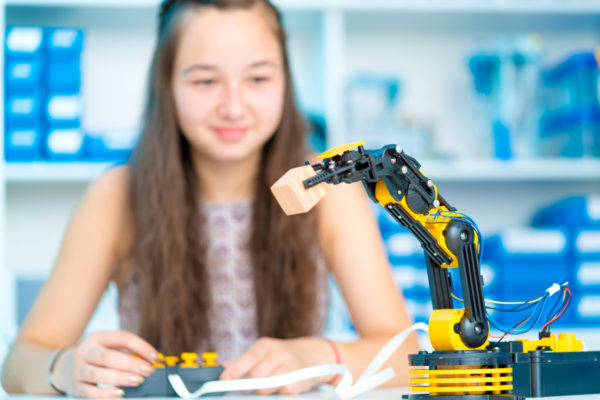In 2015, there were nearly 8.6 million STEM jobs in the United States, and that number is growing every year. In fact, STEM job growth in the past 10 years is three times that of any other field, but by 2018, it is projected that 2.4 million STEM jobs will go unfilled. Yet, STEM education programs have not kept pace–calling into question whether there will be enough qualified employees available to take on these new positions.
Worryingly, only 16 percent of students graduating high school are proficient in STEM and also interested in a STEM career. The natural response to such a low percentage would be to prioritize improving STEM education efforts in the classroom. However, this is unfortunately easier said than done.
The economic climate in the US has seen both budget cuts and increasingly diverse opinions among educators and administrators about where to spend the money made available to them. We must work to find ways of blending STEM education into all elements of the classroom, inspiring student interest at a young age.
Let’s explore a few changes we’re anticipating over the next five years that could make a real difference to the quality of STEM education teachers would be able to provide. If followed through, they could prove crucial to encouraging more students to engage with the subjects that will define our future.
1. Fueled by more effective teacher education, students will become fluent in coding
To prepare students for careers in growing STEM fields, we must increase the importance of programming literacy, or fluency in computer science and coding, in the same way that we did for reading and writing in the mid 20th Century. We need students to become as familiar with technology as they are with a pen and notepad. And it happens through hands-on experience.
However, it’s difficult to achieve this kind of widespread programming literacy when it hasn’t already been a part of most teachers’ schooling. School districts, particularly administrators, must commit to providing the resources necessary to train teachers on STEM subjects that they may not have had the opportunity to learn before. Supporting teachers’ personal education in this way will allow them to further integrate coding and computer science into the classroom curriculum, furthering the development of programming literacy.
(Next page: 2 more STEM predictions for the future)
2. Entertainment and education will converge
Today’s kids are “digital natives,” having grown up around computers and other technologies. Given their familiarity with modern technology, it would be safe to assume offering young students the use of certain devices, applications or hardware within STEM lessons would be a ‘sure-fire’ way to keep them engaged and excited. However, teachers are finding that this familiarity is actually breeding a sense of apathy among their students. It’s ironically becoming increasingly difficult to present STEM lessons in a way that maintains student interest.
To generate excitement around STEM lessons, it’s important to bake educational value into areas of technology that students are already engaging with on a daily basis, such as smartphones, tablets, video game consoles, and other devices. In the next five years, we will see a convergence of entertainment and education to occupy students’ interest. For example, integrating educational content into mobile gaming will allow students to stay engaged and feel as though they are playing (when they are actually learning). With this kind of assimilation, mobile gaming and coding education can become one.
However, this is another area where a lack of teacher training becomes a roadblock. Teachers simply do not have consistent access to these new tools – or to the courses required to master them and weave them into the classroom. If we expect children to be given the tools to learn and further their STEM knowledge, we also need to give teachers equal–if not greater–time, resources and opportunities to learn.
3. The arts will change STEM to STEAM
Creating STEAM curriculum–science, technology, engineering, arts and math–is crucial to the success of student education in the next five years. When integrated into STEM, art and design give students the tools with which to think creatively and to solve complex problems. Countless studies have shown the value of art and design in a child’s education, particularly because of their ability to foster creative thinking–a skill necessary in everything from theater to organic chemistry.
The addition of art and design instruction into traditional STEM education inspires students to think in a different way. Not only does this help children succeed in school, but it also builds a foundation for expanded creativity in math and science, promoting innovation.
In the next five years, we must work to incorporate a more creative approach to STEM education. This will be essential for molding the upcoming generation of students into the future engineers, scientists, mathematicians and creators that will shape our society through the next chapter of the technological revolution. Equally important, however, will be the focus on providing teachers with the right resources – such as basic computer science and coding training, and STEM and Arts integration training – to implement the lessons that will create these workers of the future.
It all starts in the classroom.
- 4 ways to encourage play in education - April 25, 2024
- CoSN IT Leader Spotlight: Lisa Higgins - April 25, 2024
- It’s time to pay student teachers - April 25, 2024


